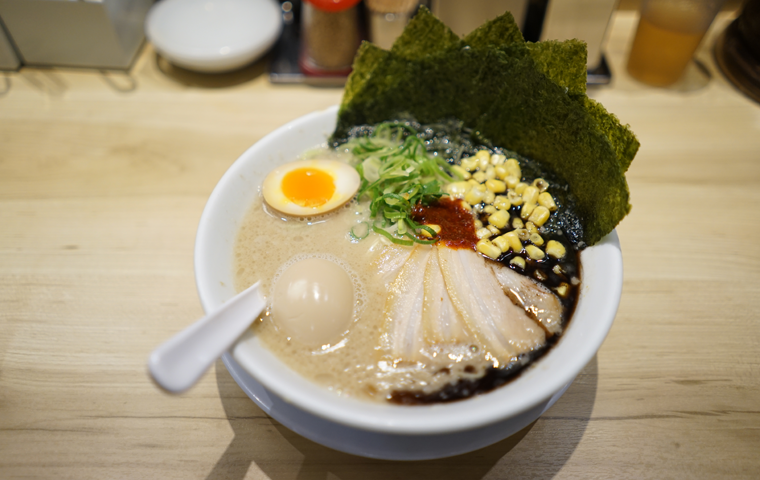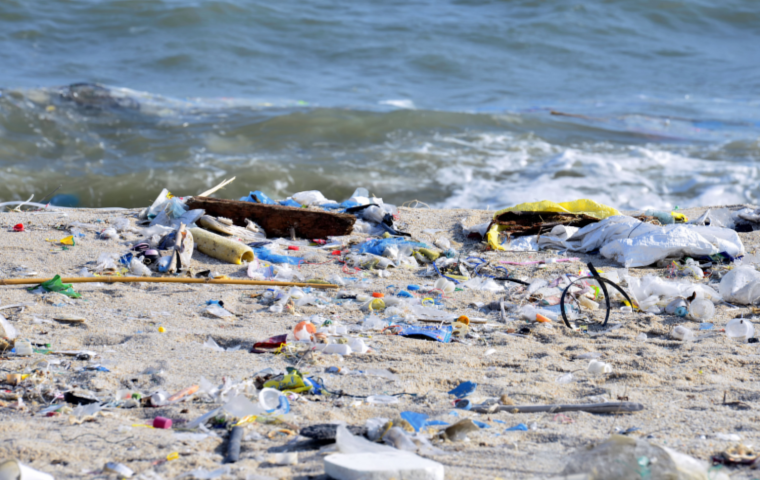The Trend in Plastic Free: “Bag Charge” Is Just the Beginning
Related Articles

Shoppers Accustomed to Refusing Bags; Next Target Is Plastic Beverage Bottles and Food Containers
More than a year has passed since the introduction of mandatory surcharge for plastic shopping bags on July 1, 2020. “Would you like a bag, with a fee?” “No, it’s okay.” Such conversations have become the norm at store counters.
According to the Japan Franchise Association that has convenient store chains as its members, the rate of shoppers declining plastic bags in June 2020 before the mandatory surcharge was only 28.3%, but rose to 74.6% in February 2021. Supermarkets had already been making efforts to reduce plastic bags. The industry organization for supermarkets, Japan Chain Stores Association, says that the bag refusal rate was as high as 57.2% in FY 2019, and reached 75.3% in FY 2020.
Ecological Only Through Repeated Use
Before the mandatory surcharge was introduced, shoppers who did not want plastic bags had to say so specifically or notify by placing a “No Bag Required” card in their shopping basket. Especially at convenience stores, many people must have felt reluctant to interrupt the store clerks as they are bagging the merchandise and say you don’t need a bag.
The mandatory surcharge not only meant shoppers had to pay for a bag, but a change to a system where a bag is provided only to those who ask for it. This shift in the default way was the driving force for people to change their behavior.
At the start, those involved had pointed out there is a loophole for the mandatory surcharge. The law applied to plastic bags for takeout with a thickness of less than 50 microns (0.05 mm), and did not cover thicker plastic bags, marine biodegradable plastic bags, or those containing 25% or more plant-based bioplastic. They anticipated many businesses would provide inapplicable plastic bags or paper bags for free to avoid charging fees.
As it turned out, many retailers switched to bioplastic bags from plastic bags and also charged fees, or began charging for paper bags as well. Uniqlo used to offer paper bags for free but began charging 10 yen each from September 2020. This outcome exceeded expectations. Since paper bags and bioplastic bags cost more than conventional plastic bags, and offering them for free doesn’t pay, we could say these companies have made rational decisions.

Meanwhile, there are some points to keep in mind. Many retailers have a section dedicated to reusable bags. You may need more than one bag in different sizes to suit various purposes, but there is no point if you purchase many just for the design.
We also often hear the question, “Are reusable bags really eco-friendly?” University of Tokyo Graduate School (urban engineering) Lecturer Jun Nakatani et al. conducted a study on the life cycle assessment (LCS) which considers a product’s environmental impact throughout its life cycle—raw material extraction, manufacturing, transportation, disposal, and recycling. A comparison between a plastic bag and a polyester reusable bag, both made in China, showed that the CO2 emission of a reusable bag is 50 times that of a plastic bag.
This is mainly because the weight of a reusable bag is about 10 times that of a plastic bag, and the manufacturing process of the polyester fabric, which is the material stage, has a high environmental impact. Only after 50 times of use does the CO2 emission of a reusable bag become lower than that of a plastic bag, and further declines with repeated use. According to a 2006 study by the U.K. Environment Agency, cotton bags need to be used over 130 times to be greener than plastic bags.
We often see companies and local governments distributing bags printed with their logos to their clients or residents, posing to contribute to the United Nations Sustainable Development Goals (SDGs). But they should take a step back and reconsider how many times the bags will be used by those who receive them.
Tokyo’s Tap Water Effect
Plastic bags became the first target in reducing single-use plastics because they were mere freebies provided as a service for the shoppers and it was reasonable to charge a fee. Also, from around the 1990s, a movement for using reusable bags spread as an effort to save resources and prevent global warming. Even though Japan had been making public and private efforts in plastic bag reduction from an early stage, it has lagged other countries in legalization, and has just caught up. Now, the world is already heading for the next target.
The focus is now on plastic bottles. It is said that a million plastic bottles are produced every minute around the world (2017 research by Euromonitor). According to statistics from the Council for PET Bottle Recycling, the recycling rates of plastic bottles in 2019 were 85.8% in Japan, 39.6% in Europe, and 19.7% in the U.S.
As for the non-recycled plastic bottles, in countries and regions lacking proper recycling systems, most of them end up in landfills, and some bottles that were not appropriately discharged flow out into the natural environment including mountains, rivers, and seas. Measures to prevent illegal disposal and putting them on the proper recycling route is necessary, but can we say that everything is solved just by recycling?
So I focused on not only the plastic bottles as a container, but the environmental impact of the “lifestyle of drinking beverages from a plastic bottle,” and compared four patterns of drinking water on the go. Beverages in plastic bottles consume a lot of energy and emit CO2 in its product life cycle, not only by manufacturing bottles from oil resources but also in transportation, refrigeration during sales, and recycling of the empty bottles.
In contrast, in the case of drinking tap water from water coolers or reusable water bottles, CO2 emission is far less. Although a lot of energy is used to manufacture stainless steel for the water bottles, it is assumed that a bottle is used 100 times. Like reusable bags, a reusable water bottle will not be eco-friendly unless used repeatedly enough to have an environmental impact lower than plastic bottles.
We often hear cases of companies and local governments replacing the plastic bottles in vending machines with cans, in their efforts to go plastic free, but does this reduce environmental impact? Instead of just eliminating plastic bottles, having less beverage vending machines and installing tap water filling stations would be more effective in reducing the environmental burden.
During the Tokyo Olympics, social media postings by foreign athletes saying, “Tokyo’s tap water is safe and tastes great!” became a hot topic—an example showing the high reputation of the tap water in Japan.
In 2018, Tokyo’s Bureau of Waterworks installed a water refill station in the courtyard of the Tokyo International Forum near Yurakucho Station, to promote the quality of “Tokyowater.” The usage is monitored by a smart meter, with the data disclosed. In FY 2019, total 24,578 liters were used. This is equivalent to 49,156 bottles of 500 ml bottled water. The usage peak was in August, equivalent to 7,760 bottles, an average of 250 bottles per day.
At the sailing venue in Enoshima during the Tokyo Olympics, the Kanagawa Prefectural Government Enterprise Bureau installed three water refill stations. There were 4,416 users, and a maximum 1,000 people filled their water bottles in a day.
Other local governments and commercial facilities are recently introducing water refill stations in their efforts to contribute to SDGs, but just installing them would not reduce environmental burden. We hope they will also provide information on the actual usage.
In June 2021, the Diet passed the “Act on Promotion of Resource Circulation for Plastics.” The bill aims to reduce and streamline the use of plastic resources for a product’s every stage of life cycle from design to disposal, and the governmental and ministerial ordinances drafts for establishing the measures was presented on August 23 at the council between the Ministry of Environment and Ministry of Economy, Trade and Industry.
The highlight was the requirement for businesses annually offering five tons or more single-use plastic products to consumers for free to reduce the usage of the 12 specified items (spoon, fork, straw, toothbrush, hanger, etc.). Like plastic bags, these items had been provided for free alongside product purchase, accommodation, or laundry services. So there is plenty of room for reduction, as businesses can make use of point-cards for declining the items, charge fees, switch to reusable items, or use non-plastic material.
Companies Taking Measures Before Legalization
Meanwhile, single-use plastic cups and food containers also need to be reduced since they are the most littered items, along with plastic bottles. Companies are already taking measures on these.
Starbucks Japan began serving cold drinks in paper cups certified by the Forest Stewardship Council (FSC) instead of plastic cups from April 2021. Convenience store Lawson also switched to paper cups for their iced coffee in November 2020. And from September 14, 2021, it also introduced a discount for purchasers of oden who bring their own container with a lid. So, I took my own container and ordered oden at a Lawson store. The store clerk was happy to serve it in my container, and I got a 39-yen discount.
Sale by volume is also attracting attention. Many stores are displaying merchandise in stylish cases for sale by volume, often seen in European or American organic supermarkets. However, you need to note that although some stores let you bring your own container, others require purchasing of a dedicated container.
Also, some imported items, like liquid detergents, have accumulated environmental burden through transport, and the plastic refill container at the store is single-use. Even though the plastic waste does not end up at your place, it still exists. You also need to be careful with unpacked food since they may perish faster and result in more food waste.
“There are various dimensions to environmental impact, and even experts can be uncertain of what to prioritize when deciding on products or actions,” says Tomohiro Tasaki of the Material Cycle Division of the National Institute for Environmental Studies. It is important to provide information, such as comparison data, to help consumers make wise decisions, and conduct research and development for that purpose.
(Ryoko Seguchi, environmental counsellor)




